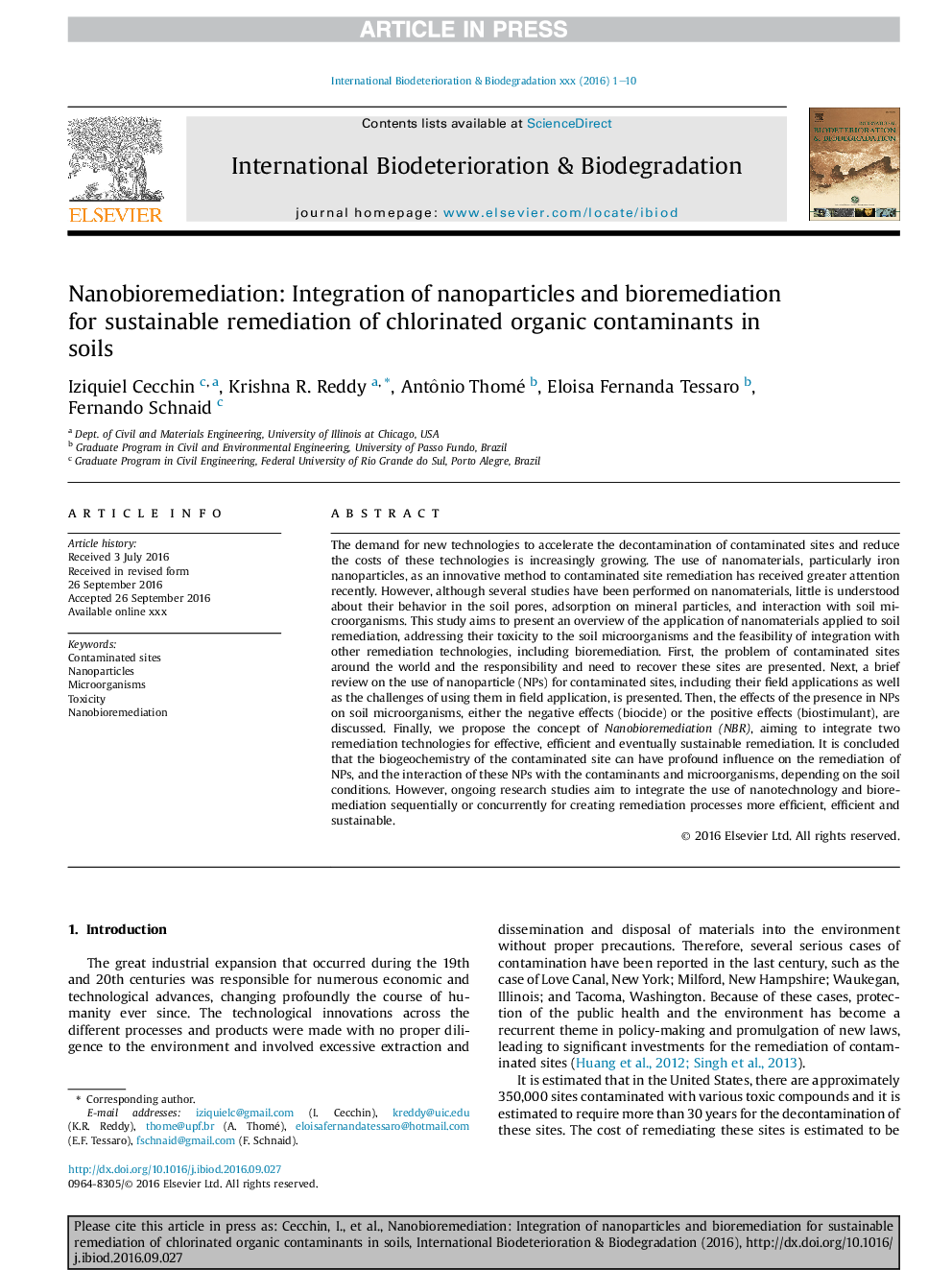| Article ID | Journal | Published Year | Pages | File Type |
|---|---|---|---|---|
| 5740469 | International Biodeterioration & Biodegradation | 2017 | 10 Pages |
Abstract
The demand for new technologies to accelerate the decontamination of contaminated sites and reduce the costs of these technologies is increasingly growing. The use of nanomaterials, particularly iron nanoparticles, as an innovative method to contaminated site remediation has received greater attention recently. However, although several studies have been performed on nanomaterials, little is understood about their behavior in the soil pores, adsorption on mineral particles, and interaction with soil microorganisms. This study aims to present an overview of the application of nanomaterials applied to soil remediation, addressing their toxicity to the soil microorganisms and the feasibility of integration with other remediation technologies, including bioremediation. First, the problem of contaminated sites around the world and the responsibility and need to recover these sites are presented. Next, a brief review on the use of nanoparticle (NPs) for contaminated sites, including their field applications as well as the challenges of using them in field application, is presented. Then, the effects of the presence in NPs on soil microorganisms, either the negative effects (biocide) or the positive effects (biostimulant), are discussed. Finally, we propose the concept of Nanobioremediation (NBR), aiming to integrate two remediation technologies for effective, efficient and eventually sustainable remediation. It is concluded that the biogeochemistry of the contaminated site can have profound influence on the remediation of NPs, and the interaction of these NPs with the contaminants and microorganisms, depending on the soil conditions. However, ongoing research studies aim to integrate the use of nanotechnology and bioremediation sequentially or concurrently for creating remediation processes more efficient, efficient and sustainable.
Related Topics
Life Sciences
Environmental Science
Environmental Science (General)
Authors
Iziquiel Cecchin, Krishna R. Reddy, Antônio Thomé, Eloisa Fernanda Tessaro, Fernando Schnaid,
